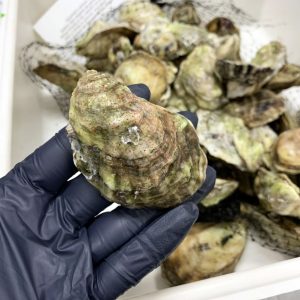Major bays impacted

Courtesy, Leilia Lemos, FIU
Scientists at Florida International University’s Institute of Environment reported last week that every single oyster they checked in Miami’s Biscayne Bay, Tampa Bay, and around Marco Island off the Southwest Florida coast had contaminants known to pose serious health risks to people and wildlife.
The contaminants are perfluoroalkyl and polyfluoroalkyl (PFAS) and phthalate esters (PAEs). They were found in all 156 oysters taken from the three bodies of water. The highest concentrations were in Biscayne Bay oysters. PFAS includes thousands of man-made chemicals including those used in a wide range of consumer products and such things as firefighting foams. Likewise, PAEs are widely used in consumer products, including cosmetics. They don’t break down in the environment and can accumulate in fish and wildlife. Also significant: The oysters, as filter-feeders, prove these compounds are in the water and have crept into the food chain.

Leila Lemos. Courtesy, FIU
“I wanted to look into what we’re eating and if it might be contaminating us,” said Leila Lemos, the study’s lead author and an FIU distinguished postdoctoral scholar, in a news release. “These findings are definitely a red flag, especially for areas like Biscayne Bay.” The findings were recently published in Science of the Total Environment.
The study also assessed the human health risk of consuming oysters. Lemos examined samples from the Tampa Bay oysters which originated from an oyster farm and found the health risk is low. But she noted that current assessments only include four PFAS and PAEs compounds and don’t look at the majority of other compounds.
Just last month, the U.S. Environmental Protection Agency (EPA) warned PFAS are more dangerous than previously thought, even at undetectable levels. The Florida Legislature earlier this year passed HB 1475 that requires the Florida Department of Environmental Protection to adopt statewide cleanup target levels for PFAS in drinking water, groundwater and soil if the EPA doesn’t finalize standards by Jan. 1, 2025.
LMA Newsletter of 7-11-22

